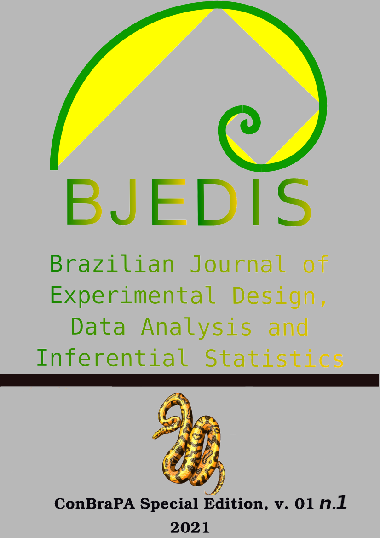A Case Study of an Experimental Design to Laboratory Process Improvement
DOI:
https://doi.org/10.55747/bjedis.v1i1.48412Keywords:
Design of Experiment, Variability Reduction, Chemical Analyses, Analytical Laboratory, Continuous ImprovementAbstract
In a chemical analysis laboratory it is extremely important to identify and quantify the contribution of the stages of the analytical process in the final variability of the results, thus facilitating the directing of efforts in the search for continuous improvement. In this type of laboratory, the improvement corresponds to the reduction of variability, which guarantees greater reliability of the analytical results, and one of the ways to achieve this reduction is to carry out an experiment. In this work, a practical example of a chemical industry will be presented in which the experiment allowed to quantify the contribution of the steps: (I) preparation of the samples, (II) of the different technicians and (III) the measurement itself. An experiment with random factors and a hierarchical factor (nested factor) was used and the results were analyzed using an ANOVA. From the analysis of the results, it was identified that the major contributor to the final variability was the preparation of the samples. Efforts were directed at this stage, with a review of the procedure and training of technicians, which provided a general improvement in the reliability of the analytical results. With a second similar experiment it was possible to prove the effectiveness of the improvement actions.
Downloads
Downloads
Published
Issue
Section
License
AUTHORS’ DECLARATION AND COPYRIGHT TRANSFER AGREEMENT
The undersigned authors hereby declare that the submitted manuscript is an original work and has not been previously published or submitted, in whole or in part, to any other journal. The authors further commit not to submit this work to any other journal while it is under consideration by BJEDIS.
We affirm that the manuscript is free from plagiarism, and we accept full responsibility for any allegations of academic misconduct that may arise.
By submitting this manuscript, the authors irrevocably transfer all copyrights of the work—including, without limitation, the rights of reproduction, distribution, translation, and public communication in any form or medium—to BJEDIS. Any breach of this agreement may result in legal action in accordance with the Brazilian Copyright Law (Law No. 9.610 of February 19, 1998).
The authors also declare that there are no conflicts of interest related to this work. All sources of financial support have been properly acknowledged in the funding section of the manuscript.



